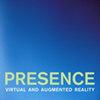Stereoscopic Visualization in Endoscopic Surgery: Problems, Benefits, and Potentials
IF 0.7
4区 计算机科学
Q4 COMPUTER SCIENCE, CYBERNETICS
引用次数: 27
Abstract
In recent years the application of 3D video endoscopic systems in clinical routine, especially in the field of endoscopic surgery, has increased steadily. The number of 3D video endoscopic systems used in the operating theatre today is obviously lower than the number of established traditional 2D video endoscopic systems. The hesitant application of the new technology can be mainly explained by the lack of evaluation of its influence on the surgical procedure and on patient benefit as well as by the need for specific economic analysis. The starting point for our investigations was to analyze the influence of 3D video endoscopy on endoscopically guided manipulations in general. In order to achieve quantitative statements we performed laboratory experiments using human factors analyzing methods. In the next step we performed clinical field studies of the application of 3D video endoscopic systems for a side-by-side comparison of 2D and 3D systems. These studies showed that the use of 3D video endoscopy has an improving influence on endoscopically guided surgical manipulations as well as on the intraoperative procedures. We also found that spatial visual perception of stereoscopic images of 3D video systems may cause problems for some users. For the validation of stereoscopic visualization systems we additionally studied the influence of isolated technical, optical, and physiological parameters on visual perception as well as on transposition into visually guided manipulations. Detailed results of these investigations concerning the influence of 3D video endoscopy on binocular perception are presented.内窥镜手术中的立体可视化:问题、益处和潜力
近年来,三维视频内镜系统在临床常规中的应用,特别是在内镜手术领域的应用稳步增加。目前在手术室中使用的3D视频内窥镜系统数量明显低于已建立的传统2D视频内窥镜系统数量。新技术的犹豫应用主要是由于缺乏对其对手术过程和患者利益的影响的评估,以及需要进行具体的经济分析。本研究的出发点是分析三维视频内镜对内镜引导下手术的影响。为了获得定量陈述,我们使用人因分析方法进行了实验室实验。下一步,我们对3D视频内窥镜系统的应用进行了临床现场研究,对2D和3D系统进行了并排比较。这些研究表明,使用3D视频内窥镜对内窥镜指导下的手术操作以及术中操作都有改善的影响。我们还发现,3D视频系统的立体图像的空间视觉感知可能会给一些用户带来问题。为了验证立体可视化系统,我们还研究了孤立的技术、光学和生理参数对视觉感知的影响,以及对视觉引导操作转换的影响。本文介绍了三维视频内窥镜对双眼感知影响的详细研究结果。
本文章由计算机程序翻译,如有差异,请以英文原文为准。
求助全文
约1分钟内获得全文
求助全文
来源期刊
CiteScore
2.20
自引率
0.00%
发文量
8
审稿时长
>12 weeks

 求助内容:
求助内容: 应助结果提醒方式:
应助结果提醒方式:


